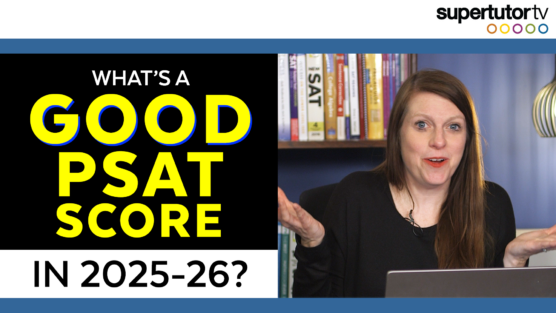Are you wondering what some of the misbeliefs about college admissions that people come to me with are? I am a consultant and specialize in admissions at top universities in the United States. A lot of families, parents, and kids come to me with ideas of how college admissions work, and many of these ideas are wrong or misguided or not exactly how the system tends to work. So, in this blog, I’m going to go through five misconceptions of college admissions.
U.S. Colleges are Looking For the Best Students
The first myth that I see is that U.S. colleges are looking for the best students. There’s this myth that if you’re the best student ever—if you’re smart, get straight A’s, and have a wonderful SAT score—you’re automatically going to Harvard. It’s a little bit more complicated than that. And so what I like to say is U.S. colleges are not looking for the best students because, frankly, there are too many of the best students. What they’re looking for are students with the most potential who fulfill institutional goals.
There are two halves to this equation, and the first part is having the most potential. Potential is my kind of way of encapsulating the concept of holistic admissions. In the U.S., we do not base college admissions on a single test score like they do in China or India. Instead, we’re looking at the whole student. Do you have the potential to get an awesome job, make lots of money, and then donate lots of money back to us as an institution once you’re an alum? Yes or no? Maybe, maybe not. Most potential—that’s what schools want more than just a straight A student. They want somebody who’s going to go out and change the business world for the better and make lots of money and then donate.
The second thing is to fulfill institutional needs. What does that mean? Colleges and universities have things like tenured professors in a particular department, and they can’t fire those people. They might have professors of Korean language and literature, and if they’re tenured, they can’t fire them. That means they’ve got to hold on to their Korean department, so they have to find some kids who want to take those classes. And if you want to take those classes, guess what? You have a better chance of admission. Even in more popular majors, for example, when I went to Stanford, economics was the most popular major. Now, it’s computer science. But what happens when you have a department that gets really bloated because it’s the most popular major in the school, and then you fast forward 20 years later, and that particular major is less popular? You still have all these professors because they haven’t quit, aged out, or retired yet, so you’ve got to pay them, and you kind of wish they were teaching classes. That means you want to enroll students who want to major in the majors where you’ve got need. That’s just one example, and it may not be as pronounced as I’m making it out to be, but that’s the general gist of how this institutional needs situation works. Institutions don’t want to become computer science factories. They want to be balanced institutions of learning where they have people from all different disciplines and all different walks of life. They want to create a mosaic, and diversity can even be an institutional goal. They want to have people of different colors, different backgrounds, from different countries, and from different states.
And every school is different in terms of what things they’re going to emphasize in this formula of fulfilling institutional goals and finding students with what they call the most potential. At UCs, potential could mean that you perform really well in whatever your context is. That’s why UCs often admit students who are the best performers at their schools, even when their schools are really low-ranking schools. And those students may not be as academically prepared for a place like UCLA as some other students who might be only in the top third of their class, but they go to the most competitive high school in America. That kid might not get into UCLA, but this kid, who’s valedictorian at a craptastic school, might because UCLA is looking at what they call potential. They’re trying to help people rise; that’s one of their goals. They’re a state institution, so they’re caring more about people in-state than out-of-state in some cases. In any case, how a school defines potential and what their institutional needs are going to define how they shape their class much more than simple academic excellence. Are academics one factor that’s being considered? Sure, but I think many parents and students underestimate all of these other factors that are churning in the mix that, in many cases, become more important in a world of great inflation.
As I like to say, in the U.S., college admissions is much more like casting for a play than a straight-up competition. When we’re casting for a play, we’ve got to find somebody who fits the role, and that’s what colleges are looking for, whatever that role is for them.
If Your Grades and Test Scores are In Range, You Have a Good Shot at Getting into Competitive Colleges
The second myth is that if your grades and test scores are in range, you have a good shot at getting into competitive colleges. I have a lot of parents and students that come to me, and they think having straight A’s and a 1500 on the SAT means they’re set for Harvard because they’ve got the stats. And we see that 5% admit rate, but these parents don’t believe it. They think that’s a bunch of hogwash because they have the stats, so they’re going to get in. But the student might have no activities except for one club. Maybe they are on JV track senior year but not a huge athlete. And at the end of the day, that’s not going to be enough if all a student has is their academics. At top 20 colleges, grades and scores are only one piece of a larger puzzle. And this is one of two myths. I’m going to get to the next myth, which is kind of the opposite. But there’s this myth that families think their kid is this exceptional kid because of their A’s and because of their test scores, and that’s enough. It is not enough. That is the baseline, people. That’s just getting you your foot in the door. And then you’ve got to have all these other things, and you’ve got to be interesting, and you’ve got to have perspective or a point of view. I would actually estimate that half of the students who are applying to Harvard are totally 100% academically qualified to survive there and could handle it. So, you have to stand out beyond those things because it’s not just some lottery where, because there’s a 5% admit rate, if you buy enough lottery tickets, you will get into one of them. It doesn’t work that way.
Don’t Get Your Hopes Up at ‘Highly Rejective’ Colleges
This brings me to the third myth, which I actually am pulling from social media. There is an attitude that I see on a lot of parent boards across the interweb where there are people that call schools that are competitive ‘highly rejective schools,’ and they are completely annoyed by them. They think no one should apply to them, and they’re these terrible places where no one has any hope, and the myth here is that you have a 95% chance of rejection at top colleges, so don’t get your hopes up, basically saying that top colleges are a waste of time and money. These parents are trying to rationalize the fact that they’re worried their kid won’t get in, so they don’t even let them apply. I also think this is totally a myth. What I like to explain to families is that your actual chance of admission at any institution is never whatever the published rate is. Stanford’s admission rate is probably four or five percent. First of all, if I think a student only has a four or five percent chance of getting into Stanford, most of the time I’m going to tell that kid they shouldn’t be applying to Stanford early or maybe even at all because I don’t think it’s worth their application. But I see a lot of students that I work with whose chance of getting to Stanford isn’t five percent. It might be 10, 20, or even 50%.
What I’m doing with students is looking at their strength of application, and then we’re figuring out what their chances of getting into these schools are. Every applicant has a totally different admission chance at any given school given the strength of their application and the quirks and the personality of their application. Remember that the idea of potential and institutional goals are different at every school, so the differences there can create some nuance in this story. But most of the time, a student is either going to have a 0.1% chance of getting into Stanford, or it’s going to be whatever the admission rate is times 2, 5, or 10 based on the strength of the application. You as a student can strengthen your application so that your admit rate is no longer five percent. But your admission rate doesn’t have to be their admission rate, so don’t get so caught up in this. What I like to say is you can get in; you just have to increase your chances of getting in by strengthening your application. Which isn’t just academic; it’s a lot more complex.
Essays Don’t Matter As Much if You’re In-State or You’re Applying to a Safety School
Number four is that essays don’t matter that much if you’re in-state or you’re applying to a safety school. This is the myth that I’ve come across this year: I’ve had some students look at the overall high admit rate for a school and think they can just write the essays for it the night before. They think it’s an easy school, so they don’t necessarily need my help with their application. Just because you’re applying to a state school, in-state school, or what you think is your safety school doesn’t mean you can mail in the application. I had a kid in Michigan this year that had the stats and activities to get into the University of Michigan, but he didn’t get in. I read his essays and told him he’s not going to get into Michigan with those essays because it’s really important at these competitive schools to watch those essays. You’ve really got to be on your A-game with all your applications, especially because honors programs, financial aid, and merit aid also might be more open to you at state schools. Don’t just mail it in when you’ve got an in-state application. You’ve got to be on top of things all the time, even if it’s not a hyper-competitive school, and I want you to write your best essays. Don’t do it the night before, you guys, because I’ve read essays written the night before, and I can tell, and so can colleges. And they feel like you don’t want to go here because you didn’t put in the time and effort. You can’t shortcut this process anywhere; you’ve got to do your best at all times and make an effort at every school you apply to. It matters how you present yourself.
Even this year, I’ve had students apply to what they thought were maybe not safety schools, but pretty easy fits, and get deferred or rejected because they didn’t put in the effort in that particular application. Application quality matters even if you’re applying to what you consider safety or in-state schools. Especially anything that’s ranked in the top 100, do a good job on your essays and don’t slack off. Obviously the bar is a little bit lower—you don’t have to have Harvard-level essays—but you have to make an effort, and it needs to be proofread and polished.
Activities, Awards, Test Scores, and Grades Don’t Matter After the Application Deadline
The last myth is that activities, awards, test scores, and grades don’t matter after the application deadline because it’s too late after you’ve turned in your application. Every year, 10-20% of the students that I work with typically get in either off a deferral list or off a waitlist into a school that they’re excited to go to, and I always tell them it’s not over till it’s over. They are sending emails, letters of continued interest, and updates to colleges and universities throughout the year if anything cool happens to them. If they win the Coca-Cola award, they’re shooting off an email because you’ve got to tell people about that. If you win a great debate tournament, send an email to Carnegie Mellon. Maybe Carnegie Mellon doesn’t care, but maybe they do. Are there some schools that are going to ignore all of these updates? Sure, especially some state schools, but it’s always worth a shot.
I also have students, for example, who took the February ACT a little bit late in the game, and maybe they got waitlisted. They come to me for that letter of continued interest, and I say I would have sent that in March as soon as you got the score. Colleges are run by human beings, and there are rules and deadlines, but if you’re on the border, sometimes sending this little bit of information can help improve your case, and I’ve seen it happen. I can’t tell you for sure if that’s what made them get in or not, but I sure can say it can’t hurt if you’ve got great updates to make. It’s worth it. And if you’re looking at developing your activities senior year, and if great things happen by February, you can tell schools about these amazing things that have happened to you before they release decisions. And even if you don’t get in by the decision date, there’s a waitlist, and maybe this can help get you off the waitlist. This kind of information is the kind of thing that can change the minds of college admissions officers, so it’s not over till it’s over. Don’t worry that the application deadline has finished, because there are still opportunities to communicate with colleges throughout this process. So don’t give up.
I hope you guys like this blog and that it was helpful!




